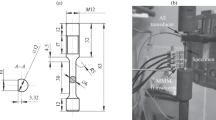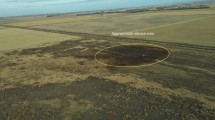Abstract
The following case study outlines metallurgical, finite element, and fracture mechanics analyses conducted to determine the cause of a pipeline rupture that resulted from prior external damage. Metallurgical and fractographic analyses indicated that the rupture initiated from a shear crack caused by mechanical damage, and that the fracture mode was overload; no indication of progressive growth was observed. Stress and fracture mechanics analysis indicated that the pipe ruptured at a pressure below the maximum allowable operating pressure.















Similar content being viewed by others
Notes
NASCRAC is a trademark of Exponent, Inc.
References
Maxey, W.A.: Technol. Oil Gas J., 15, 41–50 (1987)
API 5LX: High-Test Line Pipe. American Petroleum Institute (1963)
ASTM E1820: Standard Test Method for Measurement of Fracture Toughness. ASTM (2001)
Author information
Authors and Affiliations
Corresponding author
Rights and permissions
About this article
Cite this article
James, B.A., Sire, R.A. & Caligiuri, R.D. Determination of the Failure Mode and the Rupture Pressure in a Mechanically Damaged Pipeline. J Fail. Anal. and Preven. 8, 223–230 (2008). https://doi.org/10.1007/s11668-008-9144-7
Received:
Accepted:
Published:
Issue Date:
DOI: https://doi.org/10.1007/s11668-008-9144-7




